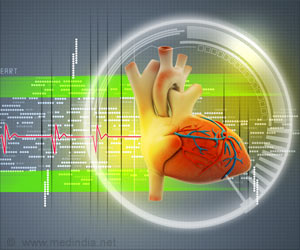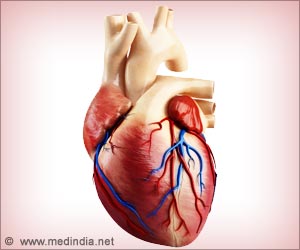The cyborg heart patch, a new engineering innovation from Tel Aviv University, contracts and expands like human heart tissue but regulates itself like a machine.

‘The longer-term goal is for the cardiac patch to be able to regulate its own welfare. If it senses inflammation, it will release an anti-inflammatory drug.’





The invention is the brainchild of Prof. Tal Dvir and PhD student Ron Feiner of TAU's Department of Biotechnology, Department of Materials Science and Engineering, and Center for Nanoscience and Nanotechnology. Their study was published in the journal Nature Materials. Science fiction becomes science fact
"With this heart patch, we have integrated electronics and living tissue," Dr. Dvir said. "It's very science fiction, but it's already here, and we expect it to move cardiac research forward in a big way.
"Until now, we could only engineer organic cardiac tissue, with mixed results. Now we have produced viable bionic tissue, which ensures that the heart tissue will function properly."
Prof. Dvir's Tissue Engineering and Regenerative Medicine Lab at TAU has been at the forefront of cardiac research for the last five years, harnessing sophisticated nanotechnological tools to develop functional substitutes for tissue permanently damaged by heart attacks and cardiac disease. The new cyborg cardiac patch not only replaces organic tissue but also ensures its sound functioning through remote monitoring.
Advertisement
For the new bionic patch, Dr. Dvir and his team engineered thick bionic tissue suitable for transplantation. The engineered tissue features electronics that sense tissue function and accordingly provide electrical stimulation. In addition, electroactive polymers are integrated with the electronics. Upon activation, these polymers are able to release medication, such as growth factors or small molecules on demand.
Advertisement
"Imagine that a patient is just sitting at home, not feeling well," Dr. Dvir said. "His physician will be able to log onto his computer and this patient's file -- in real time. He can view data sent remotely from sensors embedded in the engineered tissue and assess exactly how his patient is doing. He can intervene to properly pace the heart and activate drugs to regenerate tissue from afar.
"The longer-term goal is for the cardiac patch to be able to regulate its own welfare. In other words, if it senses inflammation, it will release an anti-inflammatory drug. If it senses a lack of oxygen, it will release molecules that recruit blood-vessel-forming cells to the heart." Dr. Dvir is currently examining how his proof of concept could apply to the brain and spinal cord to treat neurological conditions.
"This is a breakthrough, to be sure," Dr. Dvir said. "But I would not suggest binging on cheeseburgers or quitting sports just yet. The practical realization of the technology may take some time. Meanwhile, a healthy lifestyle is still the best way to keep your heart healthy."
Source-Eurekalert













